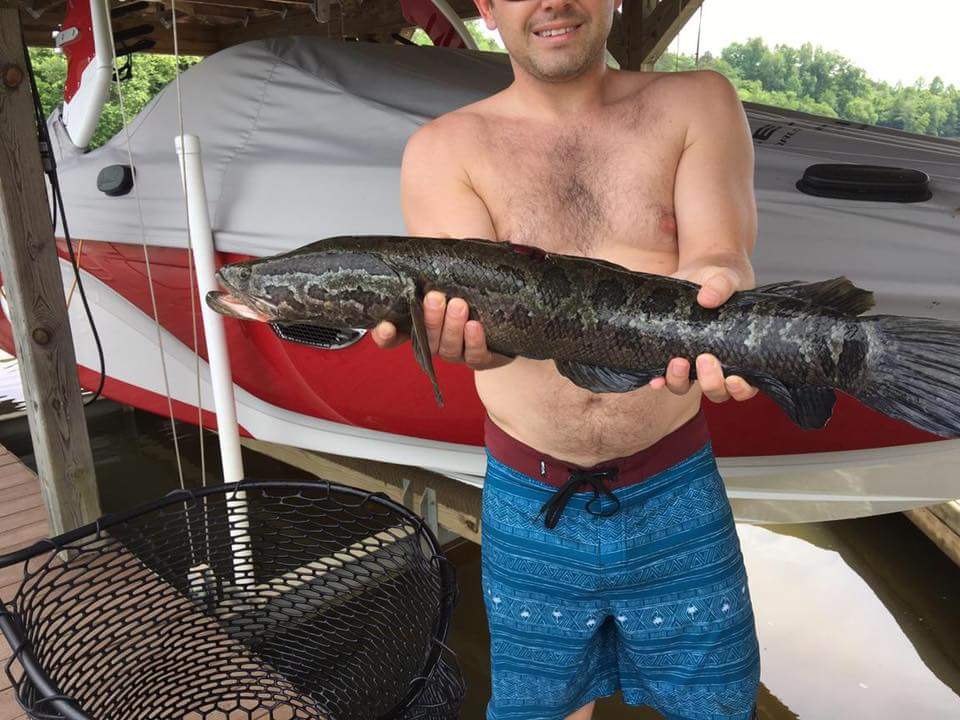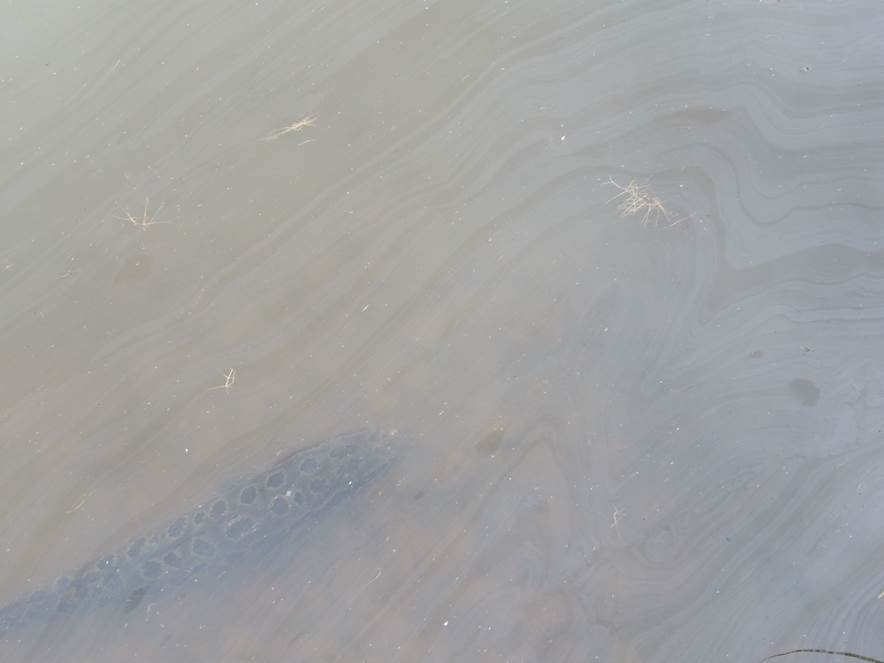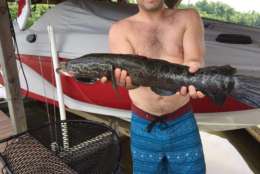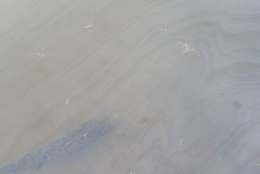



WASHINGTON — A northern snakehead caught in Virginia’s Lake Anna over the weekend is the lake’s first verified case of the fish, and wildlife officials aren’t sure what impact the invasive species may have there.
“The danger of this fish spreading is that in less-productive systems we don’t know the outcome,” said John Odenkirk, a biologist for the Virginia Department of Game and Inland Fisheries.
When snakeheads first became known in the Potomac River in 2005, there was concern the ravenous predator would decimate fish populations and threaten the river’s status as a haven for largemouth bass game fish.
But Odenkirk describes the river as a fish factory.
“In the Potomac River, it certainly doesn’t look like it’s been the catastrophe that was predicted,” Odenkirk said. “In fact, it looks like in the areas where it’s been longest, the [snakehead] numbers are declining.”
A 2015 study published by Odenkirk and colleague Mike W. Isel documents the declining snakehead numbers in Virginia tributaries of the Potomac River from that period. Last year’s numbers were even lower, Odenkirk said, as are this year’s thus far.
Snakeheads are also in most Northern Virginia reservoirs, which Odenkirk said he believes have fish populations capable of supporting the predator species’ appetite.
There is concern though, about snakeheads getting widely distributed in areas with sensitive, threatened or endangered species, or in trout populations or in areas that may not be able to handle a new predator.
Odenkirk notes snakeheads in reservoirs have been stocked illegally — probably by anglers who prize it as a game fish that fights well and tastes good.
Penalties for spreading the invasive species have recently been increased from a Class 3 to a Class 1 misdemeanor punishable with fines of up to $2,500 and/or up to 12 months in jail.








